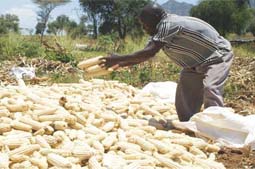Kenya Should Invest in Canola and Sunflower as Alternatives
Catherine Wairimu inches along the aisles of a supermarket some 20 minutes’ drive from the Nairobi central district. Her face flinches after stopping at the cooking oil section and glancing at the prices.
 Prices of crude palm oil have jumped by 33 percent due to the Ukrainian crisis, as sector players initiate efforts to urge the government to contain a further rise in cooking oils.
Prices of crude palm oil have jumped by 33 percent due to the Ukrainian crisis, as sector players initiate efforts to urge the government to contain a further rise in cooking oils.
Manufacturers of cooking oil are now buying palm oil, the main raw material at between $1760 (Sh200,534) per metric tonne and $1980 (Sh225,522) after the escalation of Ukraine-Russia conflicts. Kenya is a large importer of vegetable oils such as sunflower oils, soybean, corn oil and commonly used crude palm oil mainly from Malaysia and Indonesia, which produce more than 90 percent of global supplies.
Cooking oil is also bought in bulk for industrial use in the making of detergents and food stuffs such as bread.
 Maize is the cheapest source of calories among the cereal grains, making up about 65% of total food calories consumed by households in Kenya. To meet this demand, maize is produced on 40% of the total crop area – mainly by smallholders.
Maize is the cheapest source of calories among the cereal grains, making up about 65% of total food calories consumed by households in Kenya. To meet this demand, maize is produced on 40% of the total crop area – mainly by smallholders.
 Farmers tend to market their maize crop immediately after harvest in order to meet their financial obligations and to prepare for the next season. Due to this practice, maize supply becomes artificially higher than the demand thereby forcing prices to drop; only to increase within four months after selling to discuss this cereals magazine interviewed several growers in Trans Nzoia County.
Farmers tend to market their maize crop immediately after harvest in order to meet their financial obligations and to prepare for the next season. Due to this practice, maize supply becomes artificially higher than the demand thereby forcing prices to drop; only to increase within four months after selling to discuss this cereals magazine interviewed several growers in Trans Nzoia County.